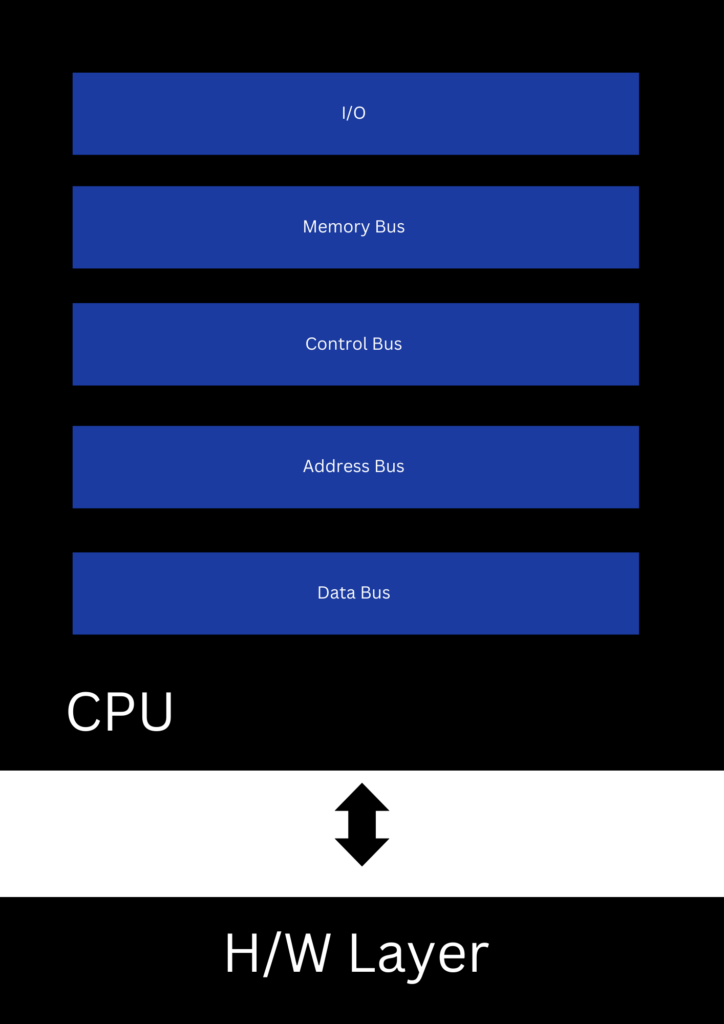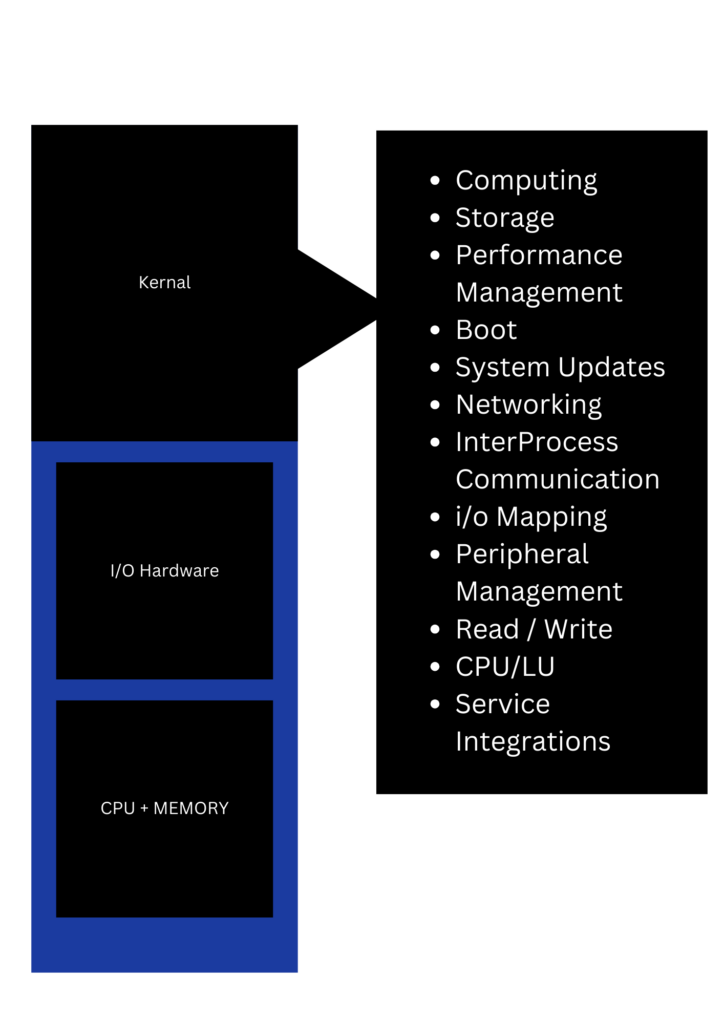CPU is the central processing unit, these are the basic set of components to which the CPU is connected.
- I.O (input-output)
- Memory
- Control Bus
- Address Bus
- Data Bus
All the above-mentioned systems are connected with the CPU and work in coordination to carry out execute fetch cycle at high speed, precession, and reliability.
CU -> CU is a component that is a sub-system of the CPU, the control unit carries out instruction execution orchestration.
ALU -> Arithmetic logic unit carries out arithmetic logical operations.
CU + ALU -= CPU (Basically the integration of CU (control unit) and ALU is called the CPU).
CPU processes the following types of instructions:
- Arithmetic Operations
- Logical Instructions
- Data Instructions
- Interrupts Processing
- Notification system
- H/W Ops
- S/W Ops
- I/O Ops
- Threading
- Resource Utilization
- Processing processes
- Thread and Handle management
These are the following PERFORMANCE METRICS that need to be monitored to derive performance data of the CPU:
- CPU UTILIZATION
- CPU SPEED
- PROCESSES
- THREADS
- HANDLES
- UPTIME
- BASE SPEED
- CLOCK SPEED
- CORES
- LOGICAL PROCESSORS
- VIRTUALIZATION
- L1 CACHING
- L2 CACHING
- L3 CACHING
- LOGICAL PROCESSORS
CPU is computational hardware that will store the information buffer for real-time and temporary operations, the CPU has two major components, which are the CU and the ALU, both the CU and ALU OPERATIONS are synchronized to generate an output.
3 STEP PROCESS :
- Instruction Fetching
- Instructor Decoding
- Instruction Execution
The CPU will carry out the fetching, Then it will DECODE and then it will execute, this cycle will be repeated billions of times, as the clock speed will be synched with the CPU FETCH-DECODE-EXECUTE Cycle.
In the Computing system, multiprocessors are leveraged to carry out computation in parallel. Multiple Processing units in the CPU are engaged in computation and memory ops to carry out computational tasks.
The processors will handle Tasks and these tasks will have services running. The services will be processed via thread and handles.
Each CPU core will be assigned a certain amount of handles by the task manager, all of this is managed and operated by task-managers(OS utility).MULTIPLE CORE will handle multiple processes concurrently, processors nowadays are faster, more reliable, and more efficient.(hyper-threading is also enabled in all the modern-day processors)
CPU is multi-processing enabled and these can be classified into:
- Async Processing
- Sync Processing
Multi-tasking is not Multi-processing, hence the above two classifications only refer to the multi-processing paradigm, the CU executes jobs by switching very quickly that can’t be noticed by users hence the frequency of switching is so fast that it can’t be gauged by the user.
The illusion:
The majority of the time the user is only carrying out one task manually but due to the faster refresh rate and faster GUI SWITCHING they have an illusion that they are doing multiple ops in reality, they are doing one thing at a time, this can be true only for manual user i/o ops, the processes can be automated and these automated processes can run in parallel across multiple cores this can be reffered as multi-processing as multiple processes are being processed at runtime by multiple CPU Cores.
Diagram


Author : Himanshu Nair (SWE | UXD | Tech writer) The article above is rendered by integrating outputs of 1 HUMAN AGENT & 3 AI AGENTS, an amalgamation of HGI and AI to serve technology education globally.